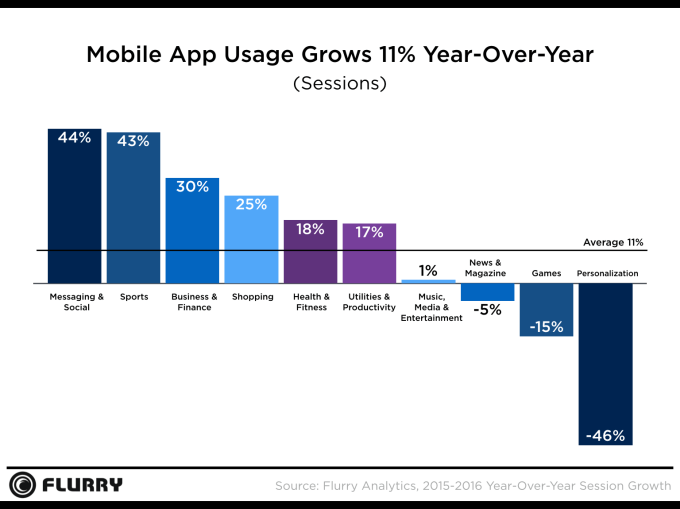 Ten years ago, Apple announced the iPhone, which soon gave birth to the App Store and the resulting broader app ecosystem. That industry has now matured, having reached critical mass, according to a new report from Flurry out this morning. While there’s still some growth to be seen — app usage is up 11 percent over last year, for example — that growth is slowing. And many app categories are now growing at the expense of others, when before, all were growing in tandem.
Ten years ago, Apple announced the iPhone, which soon gave birth to the App Store and the resulting broader app ecosystem. That industry has now matured, having reached critical mass, according to a new report from Flurry out this morning. While there’s still some growth to be seen — app usage is up 11 percent over last year, for example — that growth is slowing. And many app categories are now growing at the expense of others, when before, all were growing in tandem.
This indicates that apps have maxed out on the finite resource that is users’ time. That is, drawing attention to a new app will mean having to shift users away from others. This could be a problem for new app businesses — especially those that mean to take on the incumbents like 2016’s most used apps: Facebook, Messenger, Google, Gmail, Instagram, Amazon, Apple Music and others.
To generate its analysis, Flurry looks at the apps on its analytics platform. Flurry’s footprint now includes the ability to track more than 940,000 apps across 2.1 billion devices in 3.2 billion sessions, offering deep insight to the state of the app ecosystem today.
The firm found that overall app usage is only up a moderate amount — 11 percent year-over-year, compared with 58 percent in the 2015 annual report. However, time spent in apps is soaring, up 69 percent over last year.
Some apps are doing better than others, the report indicates.
Social networking and messaging applications, not surprisingly, had a great year, with session growth climbing 44 percent over 2015, and time spent in apps up a staggering 394 percent year-over-year.
The increases in these categories are due to a number of factors: the ubiquity of smart devices, faster mobile broadband, newer features that allow for voice and video calling, the combination of communication and entertainment that the apps allow for, the addition of live content, the aging of the “I Generation” (who were kids when smartphones arrived and are now teens with their own devices) and more.






